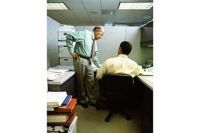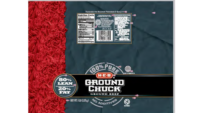Researchers found that current extension literature aimed at consumers for safe transport of meat were vague or hard to understand. To provide educators, the industry and ultimately consumers with more knowledge about proper handling behaviors (and accountability for food-safety problems), the team sought to learn more about how consumers handle fresh beef they buy in the store.
Many consumers don’t always understand the importance of keeping fresh beef products refrigerated. A consumer might buy three pounds of hamburger, deposit the hamburger in their trunk along with the rest of their groceries and then run multiple errands, stopping at the dry cleaner and then picking up their kids from school before placing the hamburger safely in her home refrigerator.
That’s the conclusion of a study by meat scientists at Auburn University. Slightly more than a quarter (25.8 percent) of respondents admit to running errands with fresh beef products stowed in either the back-seat area or the trunk, and more than 60 percent admitted to leaving fresh beef in the vehicle for anywhere between six and 20 minutes. The study found, however, that consumers may take up to two hours before returning home.
At the same time, more than half (55.7 percent) said they did not use an insulated container to transport fresh beef. Of those who did use an insulated container, a bag was most common (coolers were used only 7 percent of the time during transport).
While the handling of fresh red meat products is highly regulated from production through retail, regulation breaks down once the meat leaves the retail outlet in the hands of a customer. Mishandling by consumers could pose a food-safety risk because the temperature in a vehicle could easily allow the temperature of a meat product to reach temperatures that are not in the “safe zone” between refrigeration and cooking. Temperatures below 39, will slow the growth of bacteria, and the North American Meat Institute and USDA say bacteria will grow more quickly between roughly 39 degrees and 140 degrees Fahrenheit (4.4 degrees and 60 degrees Celsius).
Consumers of fresh beef who were at least 19 years old or older were the target population for the study. They received an explanatory letter, and an electronic link on Facebook directed them to a Qualtrics electronic survey. Participants answered four questions to determine age, gender, ethnicity and education, with nine additional questions about time, product placement and temperature protection for fresh meat products. No incentives were provided to recruit participants or to encourage them to complete the survey.
A total of 1,554 people responded, with 1,484 of them completing the entire questionnaire. Although the age range was from 19 years to older than 64, 66.2 percent of respondents were between 25 and 54 years old. More than three-quarters (76.7 percent) were female, and 99.5 percent identified as Caucasian. Education levels varied from non-high-school graduate to completion of a graduate college degree, although more than three-quarters (75.9 percent) of participants had completed at least an associate degree from an institution of higher education.
In this study, 78 percent of consumers said they shopped for groceries between the hours of noon and 9 p.m. A total of 83.2 percent said they checked out within 20 minutes after selecting their fresh beef, with the largest percentage (42.5 percent) checking out between 11 and 20 minutes. A total of 34 consumers (2.3 percent) admitted to taking their time and not checking out until as much as 60 minutes after adding fresh beef to their grocery selections.
Nearly three-quarters (74.2 percent) of consumers who were surveyed claimed they “never” run an errand with fresh beef left sitting in the vehicle. That conflicts with a 2005 study by Godwin and Coppings that concluded some 92 percent of consumers will run other errands with food products left in their vehicle. In fact, a total of 77 consumers (20.1 percent) said they returned to the vehicle within five minutes when they ran errands. In the 2005 study, researchers reasoned that people living further from retail food outlets consolidated their travel, visiting more than one store even though cold foods might not stay cold.
In the current study, more than a third (36.2 percent) of respondents said they “occasionally” or “frequently” used an insulated container when transporting fresh beef. Of the 658 respondents who used temperature protection at least occasionally, 479 (72.8 percent) said they used an insulated bag. Another 67 (10.2 percent) said they used a small (14.8 quart) cooler, while 80 (12.2 percent) used a medium (40 quarter) cooler and 28 (4.3 percent) used a large (70 quart) cooler. Four consumers, or .6 percent, used a cooler that could hold up to 100 quarts.
The researchers concluded that, despite increased consumer awareness about food safety, there’s still a 91.8 percent chance fresh red meat could be transported without protection to keep the meat’s temperature out of the danger zone. Furthermore, 25.8 percent of consumers at least occasionally run additional errands after grocery shopping, leaving fresh beef sitting in the vehicle, potentially allowing foodborne pathogens to multiply. NP




Report Abusive Comment